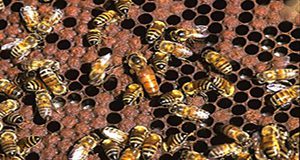Abstract
African honey bees and European honey bees are the same species of honey bee, but the two are classified as different subspecies or races of honey bee. African honey bee x European honey bee hybrids present an unpredictable combination of both subspecies‹ behavioral traits. This 4-page fact sheet written by J. D. Ellis and M. Bammer and published by the UF/IFAS Department of Entomology and Nematology explains how to “bee-proof” your house and yard and develop a bee safety plan as well as what you can do if you encounter a swarm or a colony of bees and how to treat a bee sting.
edis.ifas.ufl.edu/in1205
References
Ellis, J. D., and A. Ellis. 2009. African Honey Bee, Africanized Honey Bee, Killer Bee, Apis mellifera scutellata Lepeletier (Insecta: Hymenoptera: Apidae). EENY-429. Gainesville: University of Florida Institute of Food and Agricultural Sciences. http://edis.ifas.ufl.edu/in790
O'Malley, M. K., J. D. Ellis, and C. M. Zettel Nalen. 2009. Differences between European and African Honey Bees. EENY-147. Gainesville: University of Florida Institute of Food and Agricultural Sciences. http://edis.ifas.ufl.edu/in784
Unless otherwise specified, articles published in the EDIS journal after January 1, 2024 are licensed under a Creative Commons Attribution-NonCommercial-NoDerivs 4.0 International (CC BY-NC-ND 4.0) license.

